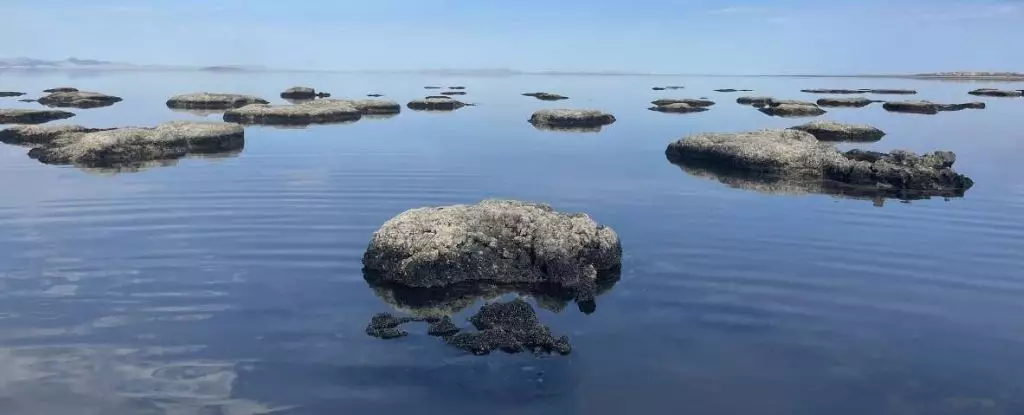In a surprising turn of events, scientists have recently uncovered a hidden population of worms lurking beneath the surface of the Great Salt Lake in the United States. For years, the lake was believed to only be home to brine shrimp, brine flies, bacteria, and algae. However, a team of researchers from the University of Utah, led by biologists Julie Jung and Michael Werner, have made a groundbreaking discovery that challenges our previous understanding of the lake’s ecosystem.
By meticulously examining calcium carbonate microbialites on the lake bed, the researchers were able to confirm the existence of nematodes thriving in the lake’s hyper-saline waters. This finding is particularly significant as it represents the most saline environment in which nematodes have ever been discovered. The team’s relentless efforts to uncover this hidden population not only sheds light on the lake’s biodiversity but also raises questions about the adaptability of these worms in extreme conditions.
It appears that these elusive nematodes may be feeding on the bacteria found within the microbial mats of the lake. This unique dietary strategy could explain how these worms are able to survive in such harsh conditions where other organisms would struggle. Interestingly, genetic analyses suggest that the nematodes found in the Great Salt Lake are distinct from any other known species, pointing to a unique evolutionary history shaped by the lake’s specific characteristics.
Despite this fascinating discovery, the future of these hidden worms remains uncertain. The Great Salt Lake is currently facing numerous challenges, including water diversion for human use and climate-induced drying. As the water levels continue to decrease, the salinity of the lake rises, putting the entire ecosystem at risk. This rapid environmental change poses a threat to the fragile balance of life within the lake, including the newly discovered nematodes.
In light of these developments, there is an urgent need to prioritize the conservation of the Great Salt Lake and its unique inhabitants. Researchers warn that the ecosystem is on the brink of collapse, with some estimates suggesting it may only have a few years left before irreversible damage occurs. Understanding the complexities of this lynchpin community is crucial for implementing effective conservation strategies that can protect the diverse array of life forms that call the lake home.
The discovery of nematodes in the Great Salt Lake represents a significant milestone in our understanding of extreme environments and their ability to sustain life. It is a stark reminder of the delicate balance that exists within ecosystems and the urgent need for conservation efforts to preserve biodiversity in the face of environmental threats. Only by coming together to protect these hidden worms and their habitat can we ensure their survival for generations to come.


Leave a Reply